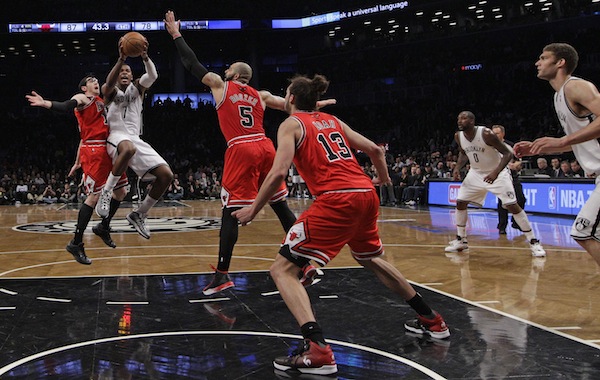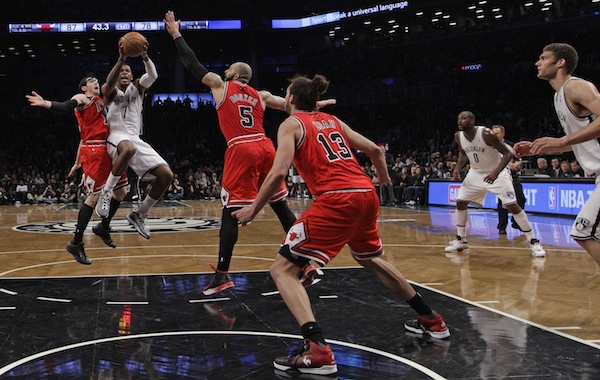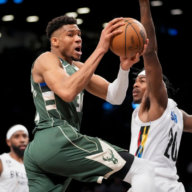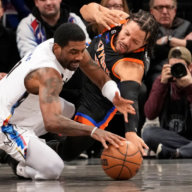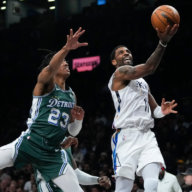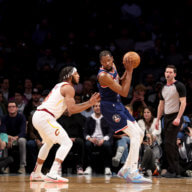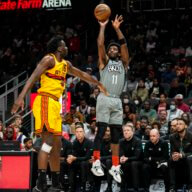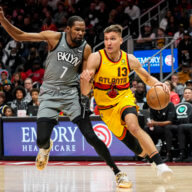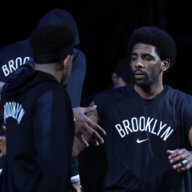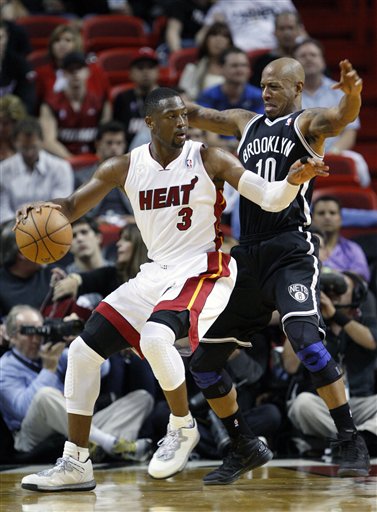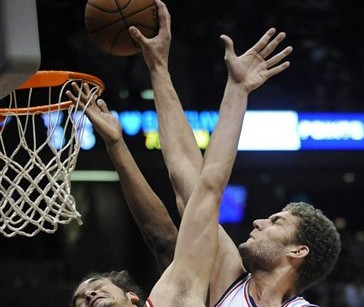Much of the Nets’ breakdown in game two was caused by a spirited Bulls’ defense and an increase in minutes for maniacally-motored Joakim Noah. But the Nets played in a way almost perfectly suited to fail against the Bulls defense.
Let’s breakdown where the Nets went wrong.
An imaginary line, drawn down the center of the court from one rim is called the “help line” and it splits the court into two sides: the side with the ball and the side without. The Tom Thibodeau-led Bulls defense is predicated on flooding the ball side with their four help defenders in the paint, which takes away driving lanes. The defender guarding the ball tries to force the ball handler to dribble into a numbers-down situation, where two or more Bulls defenders can guard the person with the ball.
A key antidote to this smothering defensive style is something the Nets lacked in game two, ball movement. Stagnation with the ball on the perimeter allowed the Bulls to load up their defensive efforts and make the Nets offense become very predictable. This static offense came to a noticeable head in the Nets’ two for 19, 11 point third quarter.
Any time an offense can get the ball to cross over the help line either via pass or dribble, it causes all five defensive players to shift and thus, opens up driving lanes, causes missed rotations and other opportunities for offenses to attack.
Swinging the ball from side to side is important for any basketball offense, but even more so against these modern day NBA defenses that load up on the ballside, like the Chicago Bulls.
The Nets used a stationary offense in the game-deciding third quarter. Watch the clips below from six Nets possessions in the third quarter and pay particular attention to how many passes are made each possession and how many sides of the court the Nets hit (how many times the ball crosses the help line).
In each of these clips you’ll see a trend: not much passing, the ball sticking to one side of the court, late shot clock situations and finally a bad shot.
Here’s four potential fixes:
- Put more shooters on the court. For those watching the TNT telecast you had to have heard Steve Kerr remarking how the Nets are playing “three on five” offensively when both Gerald Wallace and Reggie Evans are on the court, which is true to a certain extent. Neither of those players are threats to score from deep and thus allow the Bulls defenders guarding them to sag further into the paint, clogging things up for the Nets even more. Playing shooters like C.J. Watson, Jerry Stackhouse, Keith Bogans or perhaps even Mirza Teletovic more, may give the Nets more room to operate or make the Bulls pay for stacking their defense to one side.
- More play design. Compare the below play with the slogfest of plays that was shown above.
Both of these plays came from the third quarter, but you can see the difference in both ball movement and man movement in these sets. You will also notice the improved shot quality the Nets got as a result.
- More transition. As I wrote a few weeks ago, the Nets are facing a set and ready Bulls defense far too often. Looking for more opportunities to run off misses and makes will help the Nets create easier opportunities.
- Make the most of these off days. With two days off since game two, the Nets have ample time to iron out any offensive issues. It’s now up to P.J. Carlesimo and the rest of the of the Nets’ coaching staff to highlight examples through film and emphasize ball movement in practice — so that come game time the players will ping the ball around the court more.

